Chancroid: Symptoms, Causes, Testing & Treatment
| Chancroid Test Options | STD Screening Packages |
| Chancroid Treatment | Oral antibiotics |
| Price |
|
| Appointment Options |
Same-day appointment (subject to availability). Book via WhatsApp: 8893 3757 or email: hello@healthscreening.sg |
| Clinic Locations |
Orchard: 1 Orchard Blvd
#05-09 Camden Medical Centre, S248649 Tanjong Pagar: 72 Anson Rd #01-02 Anson House, S079911 |
What Is Chancroid?
Chancroid is a sexually transmitted bacterial infection that leads to painful
open sores on the genitals and swelling of nearby lymph nodes. The condition arises
from infection with Haemophilus ducreyi, a bacterium that
spreads through direct sexual contact.
Although now uncommon in many developed countries, chancroid remains present in regions where
healthcare access and STI prevention resources are limited.
The infection can contribute to significant discomfort and increase vulnerability to other STIs,
including HIV, due to the presence of open sores. Without timely management, chancroid may also
cause lasting tissue damage or scarring.
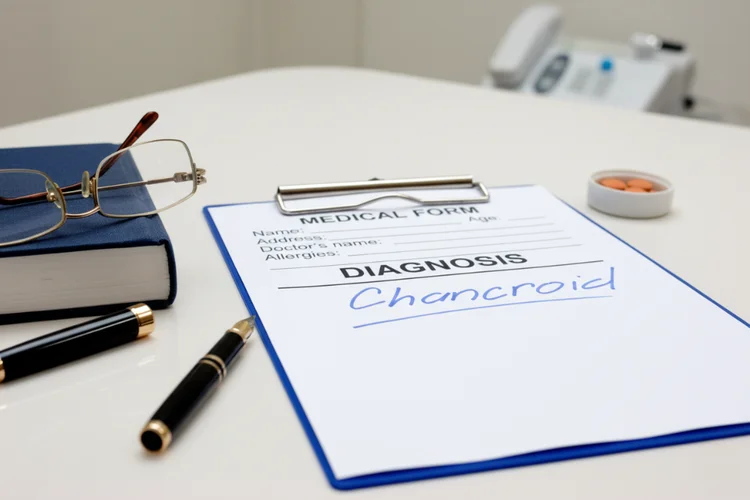
What Causes Chancroid?
Chancroid develops when Haemophilus ducreyi bacteria enter the skin through small breaks
that occur during sexual activity. The infection spreads through direct
contact with an infected person's genital sores during vaginal, anal, or oral sex. It is not
transmitted through casual contact, sharing of personal items, or use of shared facilities.
Several factors may heighten the risk of contracting chancroid:
- Having unprotected sexual intercourse
- Engaging with multiple sexual partners
- Travelling to or engaging in sexual contact within areas where chancroid remains prevalent, such as certain parts of Africa, Asia, and the Caribbean
What Are Symptoms of Chancroid?
Chancroid
symptoms usually develop 4 to 10 days after exposure, beginning with
small red bumps that quickly turn into painful ulcers, often called "soft
chancres." These sores have irregular edges and a soft, yellowish or grey base. The ulcers are
tender to touch and may cause pain during urination or sexual activity.
Other possible symptoms include swelling and tenderness of the groin lymph nodes, a
condition known as inguinal lymphadenopathy. In some cases,
pus-filled lumps called buboes may develop, which can rupture and release fluid.
Symptoms can vary between men and women. In men, sores tend to appear on the
external genital organs and are easier to notice. In women, ulcers may form within the vaginal or
anal areas, making them less visible and sometimes mistaken for other infections.
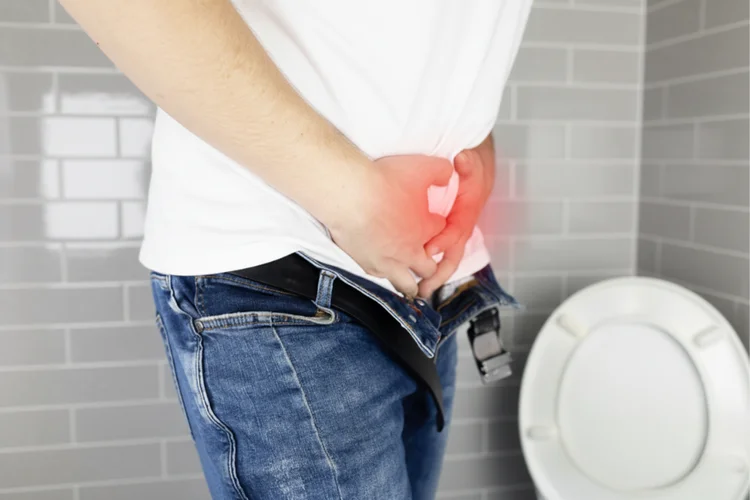
What Are Complications of Chancroid?
If untreated, chancroid may lead to complications such as chronic
ulcers, scarring, and formation of abscesses in the groin due to infected lymph nodes. These
abscesses, if not drained properly, can cause persistent discomfort and tissue damage.
Because chancroid causes open genital wounds, it also facilitates the transmission and acquisition of HIV
and other STIs. Rarely, the infection can extend deeper into surrounding tissue, resulting in more extensive
genital injury.
How Is Chancroid Diagnosed?
Diagnosis of chancroid relies on both clinical assessment and laboratory
confirmation. A visual inspection of the ulcers, combined with a review of medical and
sexual history, helps identify likely cases.
Tests used to confirm the infection may include:
- Swab tests from the ulcer for bacterial culture or polymerase chain reaction (PCR) to detect Haemophilus ducreyi DNA.
- Blood tests to exclude other infections that cause genital ulcers, such as syphilis or HIV.
Because chancroid can resemble other ulcerative STIs like genital herpes or syphilis, confirmatory testing is essential to ensure accurate diagnosis and appropriate treatment.
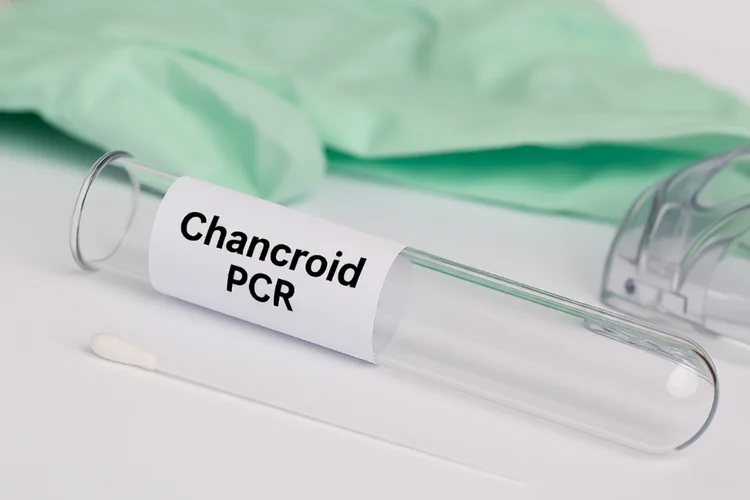
How Is Chancroid Treated?
Chancroid is a treatable bacterial infection, and
recovery usually follows a short course of antibiotic therapy aimed at eliminating Haemophilus
ducreyi. These medications also help the sores heal and reduce the risk of spreading
the infection to others.
Commonly prescribed antibiotics include azithromycin, ceftriaxone, ciprofloxacin, and erythromycin.
Ulcers typically begin to heal within 1 to 2 weeks after starting treatment.
Persistent or severe swelling in the groin may indicate the presence of abscesses, which sometimes need
drainage or aspiration to relieve pain and speed up recovery. Refraining from sexual contact until all
ulcers have completely healed helps avoid reinfection or transmission.
Chancroid Testing & Treatment Cost
At healthscreening.sg, we offer private and confidential screening for chancroid and other STIs. Testing can confirm infection and guide appropriate antibiotic treatment if required.
| Test / Treatment | Test Type | Price* |
|---|---|---|
| Consultation | From $49.05 | |
| Testing | ||
|
Genital Ulcer PCR Testing (7 tests) Herpes Simplex Virus 1 and 2, Haemophilus Ducreyi (Chancroid), Cytomegalovirus, Lymphogranuloma, Venereum, Treponema Pallidum (Syphilis), Varicella Zoster Virus |
Swab | $318 |
|
Enhanced Genital Ulcer Testing (18 tests) HIV, Syphilis (swab + blood test), Hepatitis B, Hepatitis C, Chlamydia, Gonorrhoea, Mycoplasma genitalium, Mycoplasma hominis, Trichomonas, Ureaplasma parvum, Ureaplasma urealyticum, Herpes Simplex Virus 1 and 2, Haemophilus Ducreyi (Chancroid), Cytomegalovirus, Lymphogranuloma, Venereum, Treponema Pallidum (Syphilis), Varicella Zoster Virus |
Blood + Swab | $538 |
| Treatment | ||
| Oral Antibiotics | From $1.09 per tab | |
*All prices are NETT and inclusive of GST.
We also provide comprehensive sexual health
screening packages covering a range of STIs. Both male and female doctors are available upon request
for your comfort, subject to availability.
For further details on test pricing or to make an appointment, please contact
us directly.
How Can Chancroid Be Prevented?
Chancroid prevention centres on practising safe sex and undergoing regular STI testing. Key preventive measures include:
- Using condoms consistently and correctly during sexual activity
- Limiting the number of sexual partners
- Avoiding sexual contact with anyone who has visible genital ulcers or unexplained sores
- Seeking prompt medical assessment if genital pain, ulcers, or unusual discharge develop
How to Book an Appointment for Chancroid Testing?
Why Choose Us?





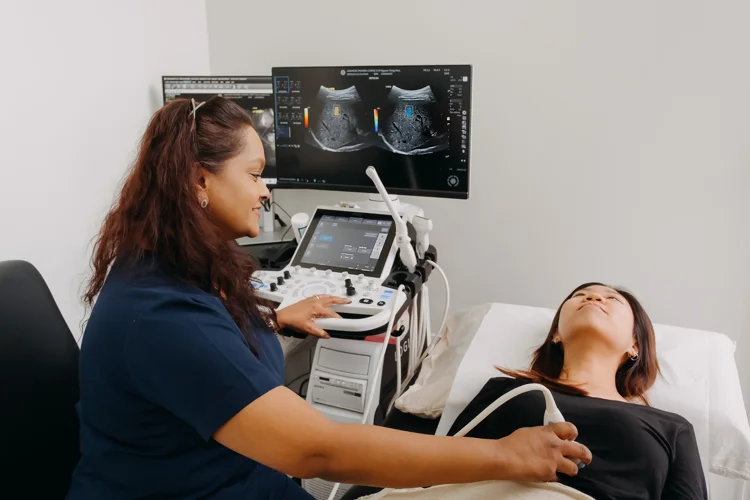
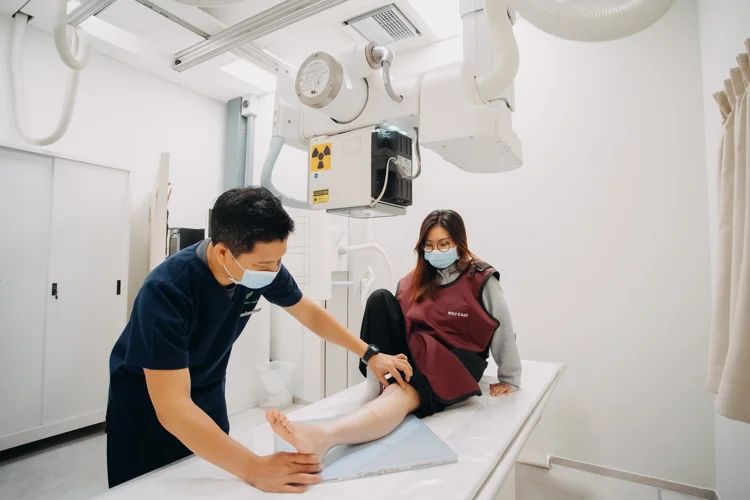

Navigate Easy With Google Maps
Health Screening Singapore
(Anson House)
Health Screening Singapore
(Camden Medical Centre)
Frequently Asked Questions (FAQ)
Chancroid does not usually resolve on its own and can persist or worsen without antibiotic treatment. Untreated infection may lead to prolonged ulceration, pain, and swollen lymph nodes that can form abscesses. In some cases, it can also increase the risk of transmitting or acquiring other sexually transmitted infections. If you notice genital ulcers or related symptoms, it is advisable to seek prompt medical assessment for diagnosis and treatment.
Antibiotics are the main treatment for chancroid, and the choice depends on individual factors and local resistance patterns. Commonly prescribed options include azithromycin, ceftriaxone, ciprofloxacin, and erythromycin, which help eliminate Haemophilus ducreyi and promote healing of the ulcers. Always complete the full course as prescribed and follow your doctor's guidance to ensure full recovery and prevent reinfection or transmission.
Chancroid and syphilis are both sexually transmitted infections that cause genital ulcers, but they are caused by different bacteria and require different treatments. Chancroid results from Haemophilus ducreyi and produces painful, soft ulcers, while syphilis is caused by Treponema pallidum and usually presents with a single, painless sore. Because their symptoms can overlap, proper testing is necessary to confirm the diagnosis and guide appropriate treatment.
Chancroid can be mistaken for other sexually transmitted infections that cause genital sores, such as syphilis, herpes simplex virus (HSV), or lymphogranuloma venereum (LGV). The ulcers may appear similar, making clinical diagnosis difficult without laboratory testing. Accurate testing is important to distinguish chancroid from these conditions, as each infection requires a different treatment approach. If you are experiencing symptoms or suspect a chancroid infection, it is advisable to consult a doctor for proper diagnosis and treatment.
The first signs of chancroid usually appear within a week of exposure and include small red bumps on the genital area that quickly develop into painful ulcers. These sores have irregular edges and a soft, yellowish base. Swelling and tenderness in the groin may also occur as the infection progresses. If you develop painful genital ulcers or lumps in the groin, it is advisable to seek medical attention promptly.
A chancre is a firm, round, and usually painless sore that appears during the early stage of syphilis. It typically develops at the site of infection, such as the genitals, anus, or mouth, and may have a smooth or slightly raised edge. Chancres differ from chancroid ulcers, which are soft, painful, and have irregular borders. If you notice a genital sore, it is advisable to seek medical evaluation for proper diagnosis.
Chancroid is now uncommon in most developed countries but remains more prevalent in parts of Africa, Asia, and the Caribbean. Its decline is largely attributed to improved STI screening, antibiotic availability, and public health measures. However, sporadic outbreaks may still occur, particularly in regions with limited access to healthcare. Individuals who engage in unprotected sex or have multiple sexual partners are generally at greater risk of contracting the infection.
Chancroid cannot be transmitted from toilet seats, towels, or casual contact. The infection spreads only through direct skin-to-skin contact during vaginal, anal, or oral sex with an infected person. The bacteria that cause chancroid, Haemophilus ducreyi, do not survive well outside the human body. Practising safer sex and regular STI testing helps lower the risk of infection.
A person with chancroid remains contagious as long as open sores or ulcers are present. The infection can spread through sexual contact until the lesions heal completely, which usually occurs within one to two weeks after appropriate antibiotic treatment. Avoiding sexual activity during this period helps prevent transmission. If you have genital ulcers or pain, it is advisable to see a doctor promptly for testing and treatment.
Chancroid cannot be treated effectively at home and requires prescription antibiotics to eliminate the infection. Home care may help relieve discomfort, such as keeping the area clean, avoiding irritants, and abstaining from sexual contact until the sores heal. However, medical treatment is necessary to prevent complications and transmission. If you suspect chancroid or notice genital ulcers, it is best to seek medical attention promptly.
Amoxicillin and doxycycline are not typically recommended for treating chancroid, as Haemophilus ducreyi may not respond effectively to these antibiotics. Standard treatment usually involves azithromycin, ceftriaxone, ciprofloxacin, or erythromycin, which are more reliable for clearing the infection and promoting healing. Always follow your doctor's prescribed antibiotic plan, as incomplete or inappropriate treatment can delay recovery and increase the risk of complications.
A chancroid diagnosis is made through both clinical examination and laboratory testing. The doctor assesses the appearance of genital ulcers and excludes other possible causes such as syphilis or herpes. Confirmation may involve detecting Haemophilus ducreyi through culture or molecular testing, although such tests are not always accessible. If you develop genital sores or pain, it is advisable to consult a doctor for proper evaluation and treatment.
With appropriate antibiotic treatment, chancroid sores usually begin to heal within one to two weeks. The duration of recovery may vary depending on the severity of the ulcers and whether abscesses or other complications are present. Follow-up testing may be advised to ensure the infection has fully cleared. Avoiding sexual contact until all sores have healed helps prevent reinfection or transmission to others.
